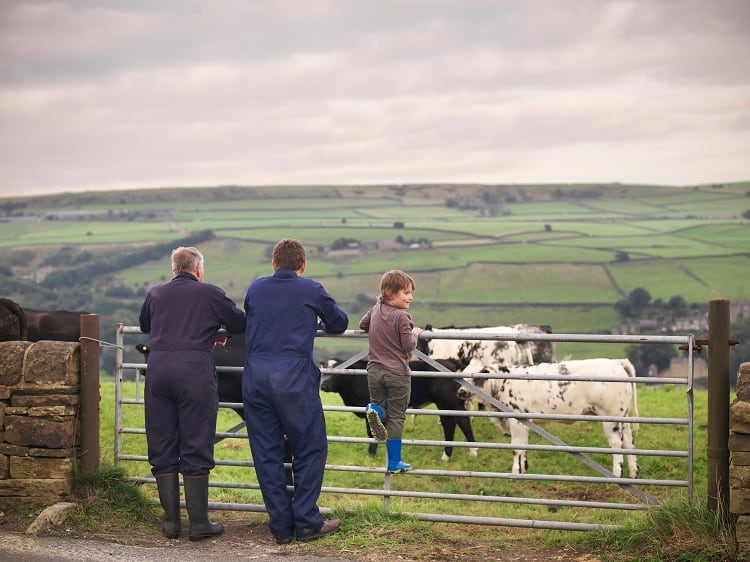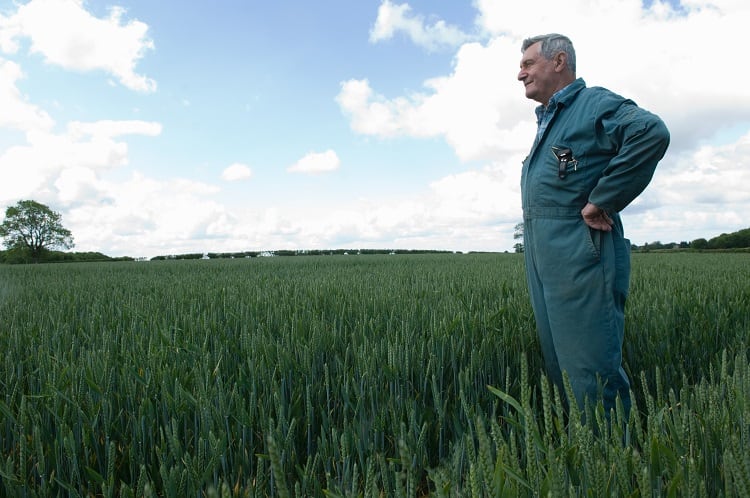British TV personality Jeremy Clarkson may not appear to be a typical farmer, but in some ways, such as age, he represents the norm. An ageing population across Europe, and the reluctance of young people to go into farming, has meant that the average age of farmers has gone up.
Many countries in Europe, including Portugal, Italy and the UK, have an ageing population. This means that a greater proportion of the country is elderly than used to be the case, and this is usually accompanied by a slowing birth rate.
While this means that people are living longer lives, there are also some downsides to the trend. For example, those working in heavy jobs, such as agricultural jobs, may have to work for longer as the average age increases.
The trend of a slowing birth rate and ageing population is prevalent across Europe (for example, there 1.53 live births for women in 2021, and 1.46 in 2022) and has meant people are expected to work longer as well. In the EU, the average time a working life was expected to last was 32.4 years in 2002, whereas in 2022 it was 36.5. People are simply working for longer than they used to in general. Agriculture is no exception.
This, coupled with the fact that fewer young people want to become farmers, instead opting for jobs in cities, means that the average age of farmers is rising significantly.
“The world’s farming population is growing older, as young people increasingly choose urban life over the farming way of life,” Todd Redwood, global managing director for consumer, retail and food at the British Standards Institution (BSI), the UK’s national standards body, told FoodNavigator.
Changing climatic conditions
A range of products have been affected by unpredictable climatic patterns all over the world. For example, potatoes in Europe and cocoa in Africa have both suffered from rain and heat turning up at unexpected times.
Extreme heat has also frequently led to drought, reducing crop yields and pushing up the price of these crops, a phenomenon known as ‘heatflation.’
“That is also true in the UK, as in many similar economies, recent statistics from the Office of National Statistics (ONS) found that 42% of farmers are aged 60 years or older and 29% aged 65 years or older. This makes farmers one of the UK’s oldest occupations, with fewer than 11% of farmers aged under 30 years. The drivers for young people not choosing farming as a career are complex, but could include job satisfaction, pay, health and lifestyle, or lack of flexibility.”
Farming is a vital job if our food supply chain is to be secure and reliable. But people going into farming want incentives to work for longer in what is a often very challenging job even at the best of times.
The problems facing farmers
Farmers are under immense pressure. According to the UN, they will need to provide an extra 60% more food by 2050 in order to feed the world’s rapidly increasing population, in spite of unpredictable climatic patterns making their jobs harder and their crops more difficult to cultivate. This kind of pressure is tricky even for the young, let alone for a rapidly ageing farming population.

Poor mental health is also a key part of farming life. According to the charity Farm Safety Foundation, 95% of farmers in the UK under the age of 40 say that poor mental health is the most significant hidden danger of farming in the current age.
Creating incentives
According to research by BSI, 64% of business leaders in the UK want financial incentives to allow them to hire older people. 46% demanded a policy solution for an ageing workforce. 50% wanted more investment into mental health and wellbeing support from the government.
“The survey found that more can be done for ageing workers, specifically ensuring farming roles remain attractive and desirable in later years. The research points to the fact that healthcare and well-being support will be critical. Equally, investment in skills development and training will only grow in importance,” Redwood told us.
“Employers have a duty to take reasonable care for the health and safety of their employees, which includes both physical and mental injuries. To cultivate an engaged agricultural workforce farm employers can go beyond this and invest in provision of support around physical health, psychological and mental well-being.”
Changing agricultural practices
Because of climate change, many farmers the world over are having to change their agricultural practices. This ranges from ‘regenerative agriculture’, largely in Europe, which aims to ‘regenerate’, rather than simply sustain, the land, to new methods of crop cultivation in Africa, such as pruning.
How technological innovation can help the farming sector
With many of the problems facing farmers being driven by age, technology could work in their favour, helping older people with the more physically demanding tasks. It could, suggested Redwood, take on some of the heavier physical loads. “AI could take on manual tasks to reduce the physical labour required. It can also enable people in physical roles in farming to remain productive for longer rather than them having to retire, which could support a larger size of workforce as the population ages.”
Furthermore, AI could work to improve accuracy and help with predictions. “AI can help provide more accurate long range weather forecasts to assist with sewing, harvesting, and irrigation, targeted spraying of weeds and pests, and early detection of disease in crops and stock. This offers the potential to aid in predictability and enable a reduction in costs, which in the long run, could improve the livelihoods and prosperity of farmers and contribute to the attractiveness of the role.”





